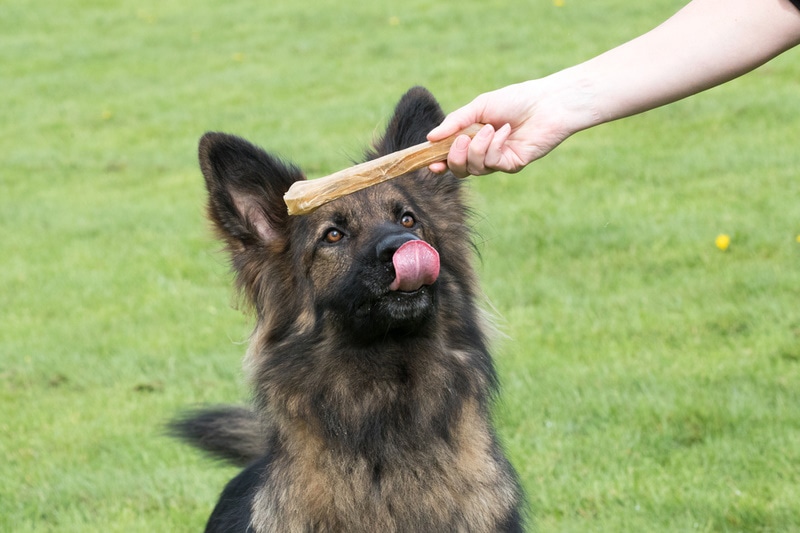Why Does My Dog Bark at a Specific Person: 7 Vet Reviewed Reasons & Solutions

Updated on
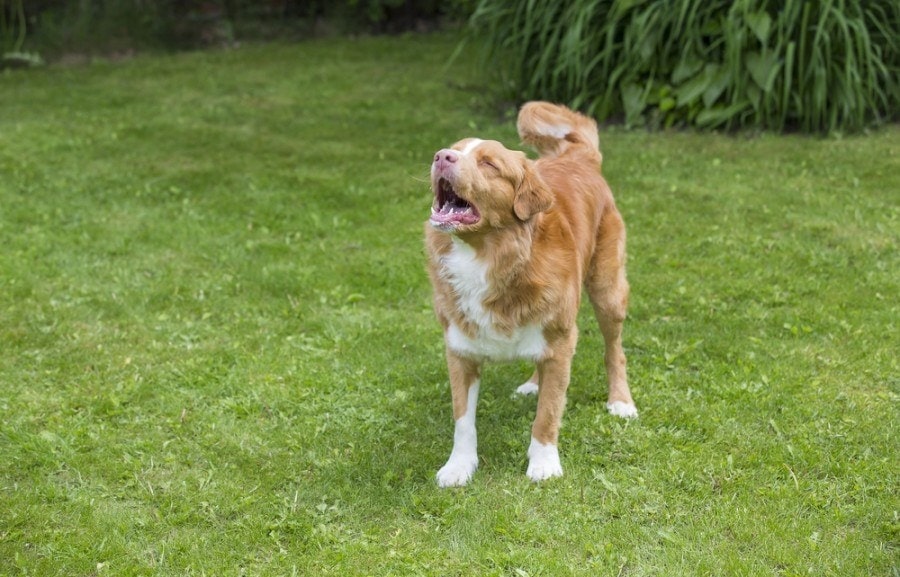
If you’re close to your dog, it can be easy to forget how different they are from humans. We see our dog’s emotions, and most of the time, they make sense. But if your dog is aggressive to one specific person, it can be baffling. Sometimes, it seems like dogs have superhuman intuition for recognizing bad people.
But the truth is, we just don’t understand all the information our dogs use to form first impressions. Here are seven of the most common reasons dogs bark at a specific person.
The 7 Reasons Why Your Dog Barks at a Specific Person
1. Off-Putting Scents
Dogs have incredible senses of smell. So, it’s not surprising that they use this in making their first impression. Sometimes, dogs dislike someone because they have an offensive scent lingering about them. Many dogs are wary of strange animal scents and can smell other pets on visitors’ clothing. People who have a hands-on profession like a doctor, mechanic, or gardener might have unusual scents too. Or there might be something else about that person’s scent that puts them on edge.
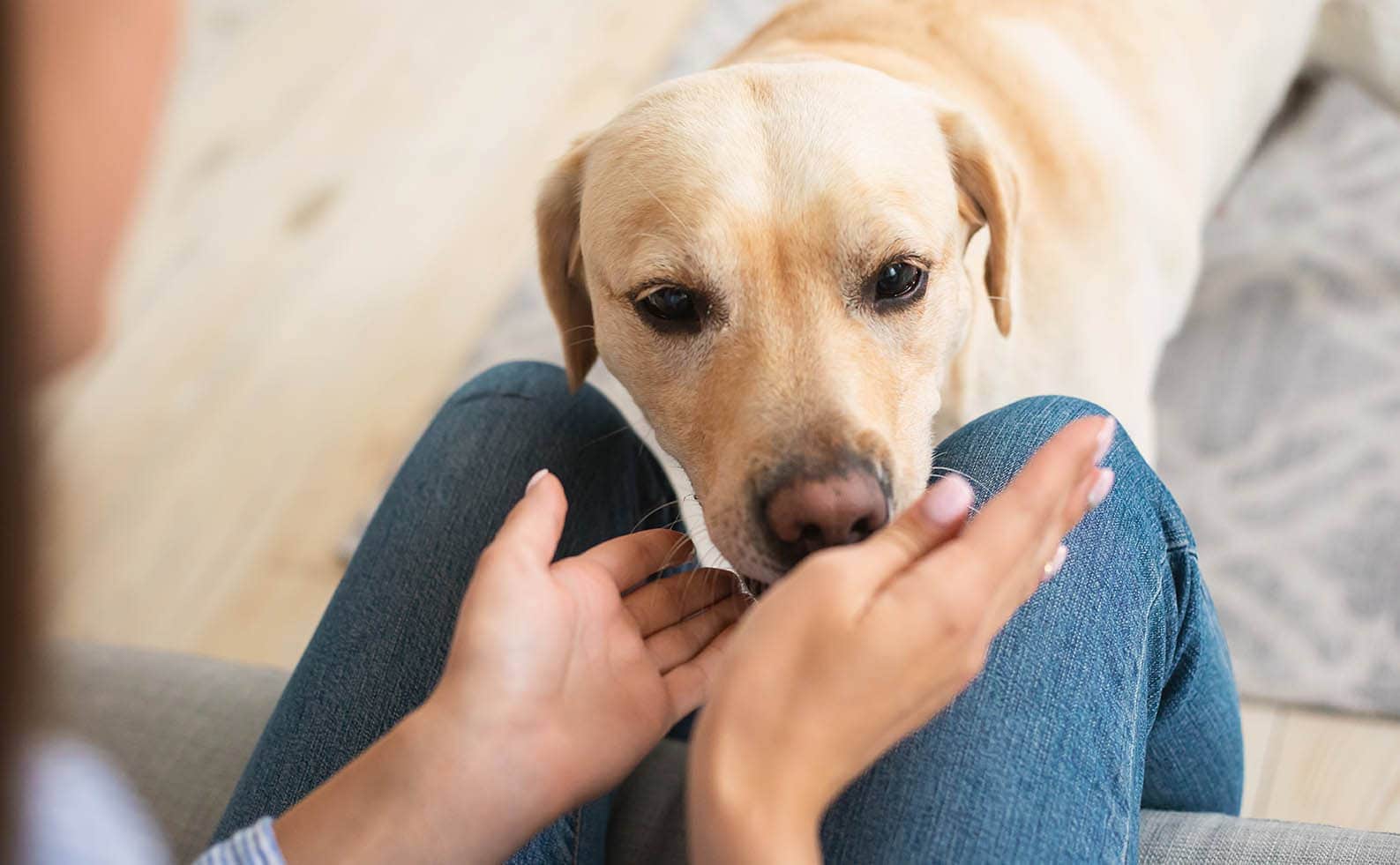
2. Intimidating Appearance
Along with scents, appearances can factor into first impressions. Many dogs are more comfortable around women than men because men tend to be more physically intimidating. The way someone walks or holds themselves might be threatening as well. For example, someone who tends to lean forward when talking to people might be perceived as aggressive by a dog, even if they mean no harm and don’t come across as strange to humans.
3. Past Abuse Reminders
If you’ve adopted your dog, there’s a chance that he’s been abused in the past. Some dogs have trauma that is triggered by reminders of an abusive person. These reminders could be anything from long hair or a muscular build to a specific body odor. If this is the case, you might be able to find patterns in the types of people that elicit a trauma response from your dog.
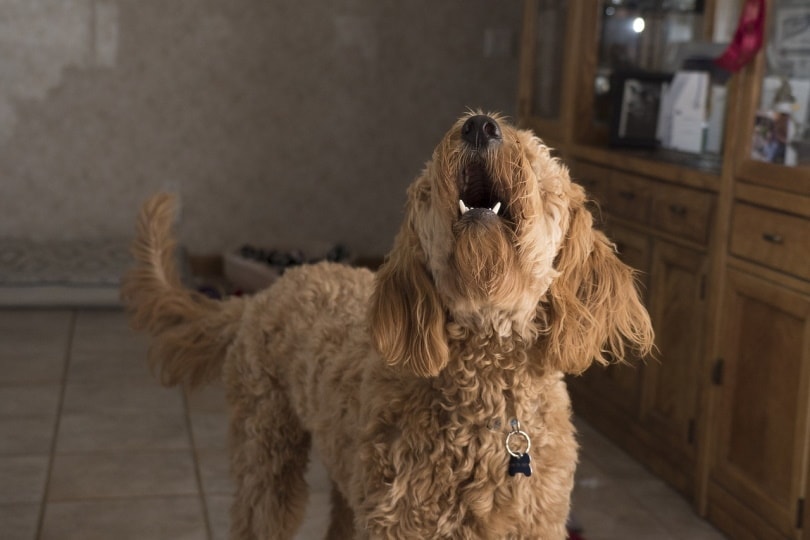
4. Body Language Red Flags
Dogs are social creatures, and they often pick up on behavioral cues that we wouldn’t expect. They might see a red flag that we don’t even realize—like their owner being tense around specific stressful people. Sometimes, dogs can pick up on subtle cues of aggression or annoyance that clue them in on how someone is really feeling about them or their owner—even when we might be oblivious. Although dogs aren’t always accurate in their assessments, some dogs can be a good judge of social situations and quickly read relationship dynamics.
5. Unusual Is Threatening
Dogs feel most comfortable around things that are familiar to them. Meeting someone new and different can be threatening to your dog. Some of the most common things to set dogs on edge are assistive devices like canes or wheelchairs. If your dog isn’t used to it, those devices might be confusing and unpredictable. Other unusual features might feel threatening too, such as facial hair, skin colors your dog isn’t familiar with, or other features that don’t fit into your dog’s “normal.”
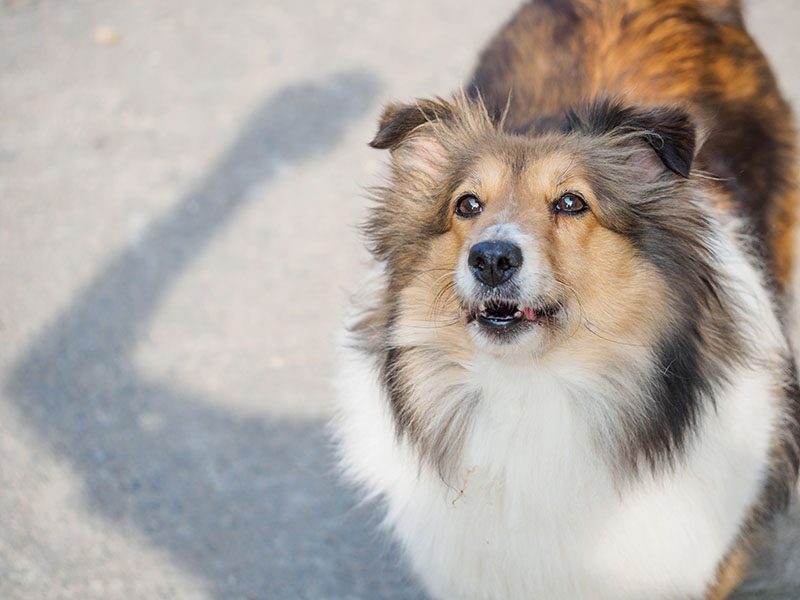
6. Jealousy
If your dog loves attention, he might see certain people as competition. This is especially true for new relationships, which often change family dynamics and require time investment. Your dog might feel like his needs aren’t getting met or worry that you don’t care about him as much. This can also be the case with parent-child relationships. If a new baby (or even an older child) takes up a lot of your time, your dog might become jealous and insecure.
7. Mistreatment
Although there are many reasons your dog might wrongly bark at a specific person, it’s always important to consider what might be going on when you aren’t looking. Hostile responses to a specific person can be a sign that your dog doesn’t feel safe around that person because of past mistreatment. However, if you have no reason to think your dog is being mistreated, don’t jump to this immediately. Make sure to consider other factors in the relationship first.

Training Out Aggression Towards a Specific Person
When dealing with an aggressive dog—even when the aggression is only towards one person—the most important thing is to ensure everyone’s safety. This might mean putting your dog in a muzzle or keeping him in a separate area while you’re working on the problem.
Aggression often needs the help of a professional trainer to work through, but you can still do things in the meantime to help your dog learn to trust. Allow the scary person to interact with your dog in a positive, controlled way, such as offering treats, playing games, and giving affection. Make sure that person avoids aggressive behavior—even in play—and raised voices. In some cases, the barking might go away naturally as your dog gets used to a new person.
At the same time, if you think your dog might feel neglected or threatened by your relationship with a person, it’s important to spend time with your dog. Occasional one-on-one time playing or walking with your dog can help your dog feel more secure.
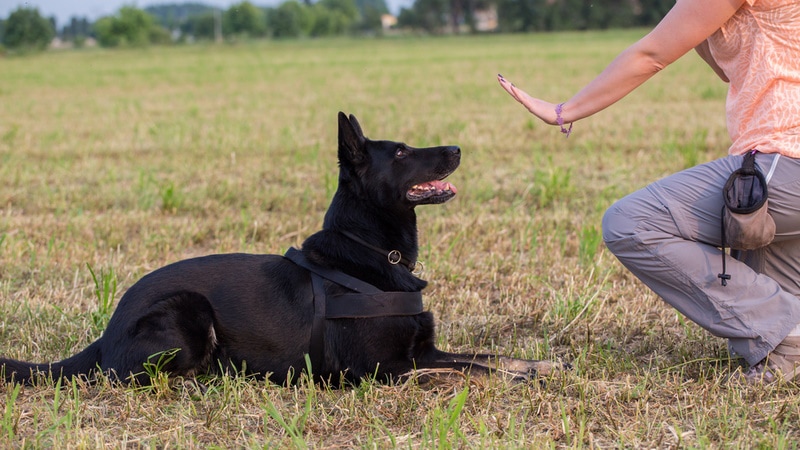
Last Thoughts
It can be hard to understand why our dog likes one person and not another, but luckily, good training can help work through many relationship problems. If your dog is generally well behaved, the chances are that this is a fixable problem, and working to build trust and train better behavior will solve the problem. In the meantime, we hope that understanding some of the root causes can give you a window into your dog’s world.
Related Read:
Featured Image Credit: Jne Valokuvaus, Shutterstock






